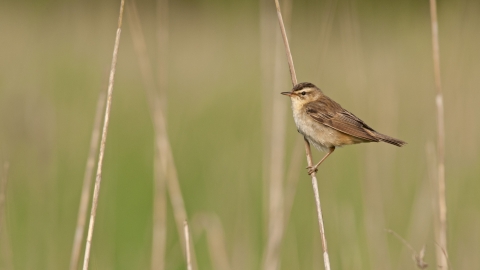Large heath butterfly by Alan Wright
Alan Wright

Dawn Monrose
Know before you go
Dogs
When to visit
Opening times
Open at all times.Best time to visit
SummerAbout the reserve
Heysham Moss is a real conservation success story. A mosaic of habitats including woodland, scrub, wet grassland and raised bog make it a biodiverse hotspot. In fact, Heysham Moss is the second best example of a cut-over raised bog in all of Lancashire, second only to our beautiful Winmarleigh Moss nature reserve.
Plant lovers and budding botanists will relish the chance to seek out round-leaved sundew, bog myrtle, bog rosemary, bog asphodel and locally rare white-beaked sedge, as well as a number of important mosses. Keep your eyes peeled for 12 species of sphagnum moss (or bog moss) – all of which contribute to the healthy raised bog ecosystem – and several rare liverworts.
Our thriving population of birds includes wonderful summer species such as sedge warbler, grasshopper warbler and reed bunting, as well as willow warbler and chiffchaff. Buzzards use the thermals to circle high overhead, and insect-lovers can watch dragonflies patrolling the reserve’s pools and ditches on the hunt for food.
In winter, snipe skulk along the edge of the wet grassland and central bog, and expertly camouflaged woodcock become one with the vegetation. Though rare at Heysham Moss, it isn’t unheard of to spot secretive jack snipe bobbing up and down as they feed, or small numbers of teal dabbling in the tranquil pools. Redwing and fieldfare have also been known to visit the Moss; gorging on hawthorn berries around the edges of the reserve.
The undisputed success story of Heysham Moss, however, is the large heath butterfly. Previously extinct on this site, the nationally rare butterfly was reintroduced between 2014 and 2016 with the support of The Lancashire Environment Fund and Chester Zoo, who cared for the eggs before they were carefully reintroduced to the Moss. So far, they have thrived – look out for underwings bordered by a row of black eyespots with a creamy yellow centre and halo.
